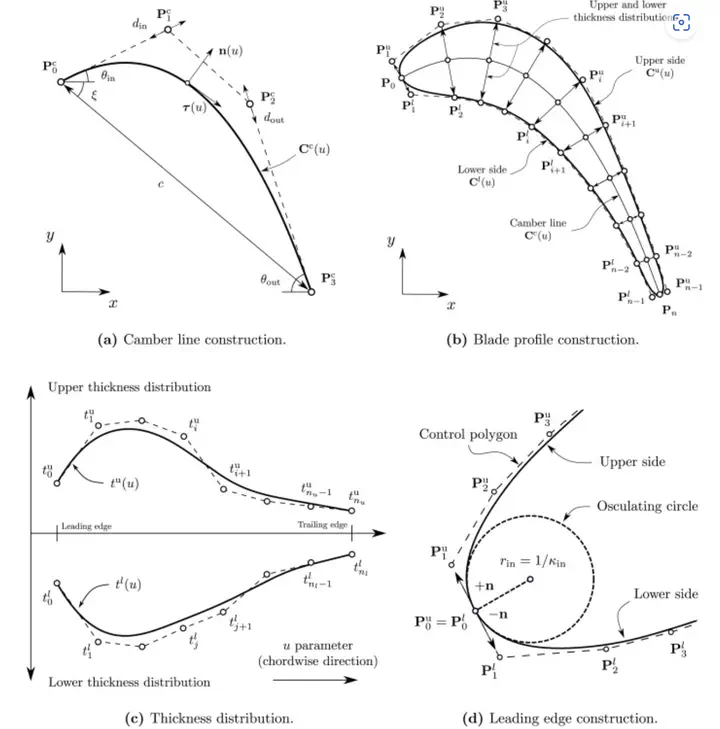 Image credit: Unsplash
Image credit: UnsplashAbstract
Turbomachinery design is increasingly carried out by means of automated workflows based on high-fidelity physical models and optimization algorithms. The parametrization of the blade geometry is an essential aspect of such workflows because it defines the design space in which an optimal solution can be found. Currently, parametrization methods used for this purpose are often tailored to one particular type of turbomachinery blade, do not provide shape derivatives required for gradient-based optimization, or are not suited to re-parametrize a baseline blade geometry defined by a set of scattered point coordinates in a systematic way. This paper thus presents a general blade parametrization method for axial, radial, and mixed flow blades based on typical turbomachinery design variables and NURBS curves and surfaces. The shape derivatives are computed by means of the complex-step method, allowing the integration of the parametrization into gradient-based shape optimization workflows. In addition, the method enables the re-parametrization of a blade geometry defined by a cloud of points by solving a two-step optimization problem. The capabilities of the method are demonstrated by replicating eight blade geometries in two and three dimensions with an accuracy comparable to the tolerances of current manufacturing technologies.